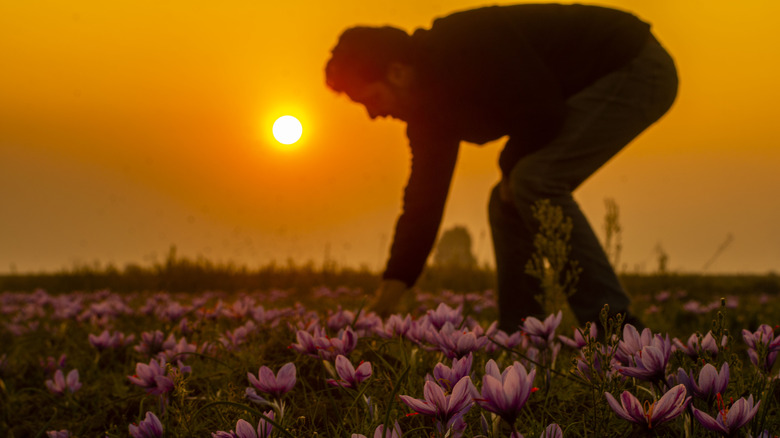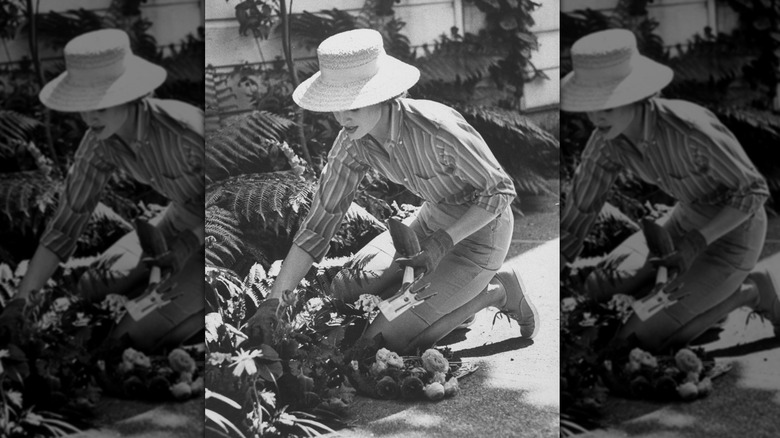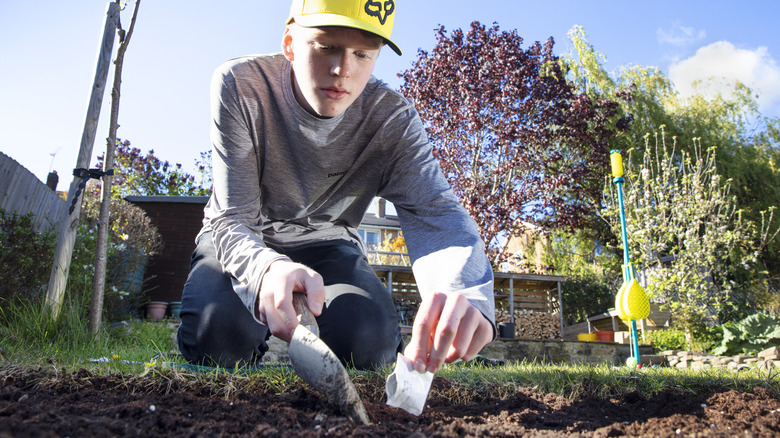The Troubling Reason America's Plant Hardiness Zone Map Gets Updated
A hobby could have worse endorsements than the Royal College of Physicians. In 2018, the body published a thorough but enthusiastic look at the physical and mental benefits of gardening. Fresh air, sunshine, exercise, and healthy produce are all welcome benefits of keeping a garden. On the other hand, there's the stress of figuring out what to plant, when to plant, and what sorts of plants will thrive in your particular neck of the woods.
In 1960, the United States Department of Agriculture published the first zone map, which is used by many to determine the best plants for their gardens. The USDA divides the nation up into plant hardiness zones, regions determined by the average extreme low temperature a given area is likely to experience year to year. It currently recognizes 13 zones, each subdivided into half zones of 5-degree Fahrenheit increments. Based on what the average winter conditions will be like, gardeners in any given zone can determine what plants will survive and thrive year after year.
2023 saw the USDA Plant Hardiness Zone Map updated for the first time since 2012, according to NPR. It showed an average temperature increase of 2.5 degrees Fahrenheit in the continental U.S., with about half the country pushed into a different zone. The USDA partnered with Oregon State University's PRISM Climate Group to develop the Plant Hardiness Zone Map for 2023, and PRISM director Chris Daly, lead author of the map, noted the general pattern. "The central plains and Midwest generally warmed the most, with the southwestern U.S. warming very little," he said. For many gardeners, that's as clear a sign as any that climate change is affecting the land and what they can grow on it.
Climate change is already affecting gardeners
Some American gardeners didn't need the USDA's newest Plant Hardiness Zone Map to tell them that their home environment was warming and their gardens changing as a result. Rachel Patterson, a woman living in Port St. Joe, Florida, told NPR that since moving there, she's found older gardeners who struggle to maintain their tomato plants. With temperatures rising, fungi spread and destroy the tomatoes, and if that doesn't get them, the sheer heat does. While the new Plant Hardiness Zone Map didn't tell Patterson anything she didn't already know, she did welcome the confirmation. "It feels like I'm not crazy," she said.
It's important to note that PRISM director Chris Daly cautioned against reading too much into it regarding climate change. He told NPR that because the map goes off of minimum temperatures over a 30-year period, there was a lot of variability baked in. Its findings were consistent with an expected gradual trend of hardiness zones advancing northward, Daly said, but its application to the present is limited.
For some gardeners on the ground, however, change is already here. Hot Springs, Arkansas was one of the areas that shifted into a new zone on the 2023 map, and gardeners there have found conditions warm enough that they can consider growing tropical plants going forward.
The Plant Hardiness Zone Map has limited application
There's no denying climate change and its impacts on what can grow where, but gardeners looking to the USDA Plant Hardiness Zone map should know that even without climate change, it can only tell them so much. According to Plant Delights Nursery Inc., the map has some broad utility, but there are plenty of other factors to consider when planting your garden — and certain shortcomings of the map to bear in mind.
One of these downsides is the fact that areas on opposite ends of the country can end up in the same zone. Vancouver Island and Raleigh, North Carolina, for example, end up in the same zone because of their annual average lowest temperature. But North Carolina may only see that low temperature for a few days at most, while another area in the same zone can be stuck in it for much longer. Some plants can handle that kind of cold for just a short time, while others can endure it through the winter. And areas with warmer summers can see greater sugar production by plants, which lets them stay hardy when it turns cold compared to their relatives in regions where summer stays cool.
To its credit, the USDA acknowledges the limits of its map. It advises gardeners to consider a wide range of variables, from soil to snowfall, winter chills to summer heat waves, when preparing their garden. And Plant Delights Nursery still recognizes the Plant Hardiness Zone Map as a handy tool — no more, and no less.


